On June 8, 2024, Ukrainian forces successfully targeted and damaged a Russian Su-57 Felon fighter jet at the Akhtubinsk military airfield in the Astrakhan region.
This incident on the ground marks the first recorded combat loss of a fifth-generation aircraft.
The attack involved three kamikaze drones that evaded Russian air defences, travelling approximately 365 miles from the frontline. Satellite images show the Su-57 intact on June 7, but post-attack images from June 8 reveal craters and scorch marks indicative of explosions and fire damage.
‼️ Вперше уражено Су-57
💥 8 червня 2024 року на території аеродрому «ахтубінск» в астраханській області рф, розташованому за 589 кілометрів від лінії бойового зіткнення, уражено багатоцільовий винищувач держави-агресора Су-57.
🔗 https://t.co/vyatL7cBjd pic.twitter.com/8wbopryp4l
— Defence intelligence of Ukraine (@DI_Ukraine) June 9, 2024
Ukraine’s Main Intelligence Directorate (GUR) commented on the damage: “The pictures show that on June 7th, the Su-57 was standing intact, and on the eighth, there were ruptures from the explosion and characteristic spots of fire caused by fire damage near it.”
With only around 20 Su-57s believed to be in service, the loss of one is significant for the Russian Aerospace Forces. Russian military-affiliated Telegram channels, including Fighterbomber and Russian Military Informant, confirmed the attack and criticized the lack of protective hangars for such advanced aircraft.





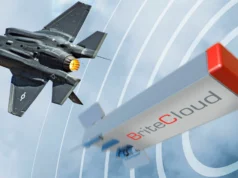
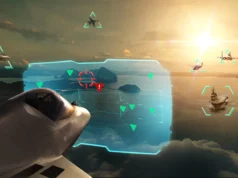
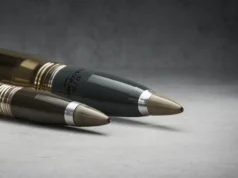
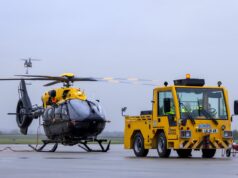

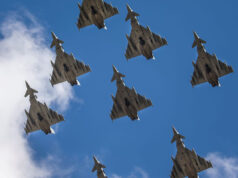


Oh dear what a shame👌
Would you intercept me, I’d intercept me
Hard to tell from the photos if it was destroyed or just damaged.
It’s interesting that one of these is that close to the front line, I wonder if they have now been used in combat or still being held back
Not close to the front line at all – around 600km away. Further than Moscow.
Might be a case of ‘damaged beyond economical repair’. Depending on how long the fires burned there could be significant, not visible, warping to the airframe and damage to the outer panels. Shrapnel or debris from the drone could have penetrated anywhere; ruined the radar, completely written off certain avionics, severed electronic or fuel lines ect. Unlike warships, you can’t just patch them up and paint over the holes, or not have to worry to much if a panel has budged slightly. Every last slight nick in the aircraft will affect the way it flies, repairing significant damage to key systems and having them rebuilt may cost more than producing a complete new aircraft.
For Russia building enough Felons has already been a massive issue, they really can’t afford to have to replace existing units already.
Possible but even ukraine said there was a fire nearby not that the aircraft was damaged or destroyed. Hard to know what happened as Russia won’t be honest either way.
Russia has been using them as Stand – Off Missile Carriers/Launch Aircraft.
Really interesting. Firstly Russia has few of the SU57 Fallon’s and definitely cannot afford to lose any of these aircraft.
Second it’s nuts that the Russian air force doesn’t house such expensive assets in hardened aircraft shelters
Thirdly. Where is their gbad systems and anti drone defences?
I hope the MOD are paying attention as our own home territories bases need their defences beefing up.
“What air defence doing?” is certainly a theme of the Russians in the last two years.
I reckon they have lost so many air defence assets they simply can’t cover even important targets. Not easy to knock up new ones.
Which makes sense but then you’d think that, as they don’t seem to really even be using the SU-57s in combat in Ukraine, they’d just move them further east.
If I were an Orc Air Force commander I’d either be using them and keep them in hardened air shelters when they’re on the ground, or if I’m not using them at all have them all flown east of the Urals, well out of range of Ukrainian weapons or drones.
It smacks of arrogance on the Russians’ part as much as anything else.
I suspect they figured that 600 miles from the front line WAS out of range of Ukrainian weapons.
Given that the list of targets the Ukranian’s have destroyed in strikes includes Russian S-400 air defence systems, I think the problems go deeper than just “not enough asset” tbh.
I may be wrong, but not aware that there are HAS in Russia, and not the fairly comprehensive CBR types we see at some RAF Stations.
Going back to when I was reading up on Soviet infrastructure, any HAS were in eastern Europe with GSFG or in Czech or Poland.
That would make sense as essentially the potential front line in the Cold War was over 1500miles from the Russian boarder..Soviet defences were not designed for a war on Russias boarder and post soviet Russia never really had the budget or need for HAS.
Exactly. Which is why I don’t believe there are any. Russian airfields are fairly rudimentary affairs and, if anything, have revetments as GB says.
You see Ivan, why make bespoke airfield when we just say MiG can land in field.
Yes, their MiGs are built for that too. Seen photos of M31, SU15, TU128, and M25 in some seriously basic airfields up north, like Andamya. ( unsure of spelling )
To be fair, you could plink a substantial amount of the RAFs AAR/AEW and transport aircraft from the perimeter fence with a .22lr. They probably wouldn’t even know you had done it until Monday morning. Base protection is a joke.
I’ve l aways believed in engineering that “if it looks right, it probably is right”; a Geoffrey de Havilland principle. The Su-57 doesn’t look right, that combined with its thousand year development cycle makes it a most likely a lump of crap; to use the technical phrase 🙂
The leading edge looks strange but I am no aerodynamicist!
I think in this picture the slats are down which is why the whole thing tilts forwards. The problem is that it is essentially an SU35 fuselage with new wings and nose, so it just looks cobbled together rather than well-designed like the F-35.
The usual condition for the deploying leading edge devices is when undertaking a high angle of attack maneuver. These may be high g turns or for landing a delta wind aircraft. I should point out that high g can be achieved at low speed with the leading edge devices deployed as these will significantly delay the onset of a aerodynamic stall.
I would also point out Sukhoi have a record of clever aerodynamics mainly because they have traditionally lacked access to the computing power necessary to build aircraft like the F16 which is artificially stable in flight.
Post Soviet era things have declined badly for the Russian defence industrial base, possibly in large part due to corruption. Just as well for Ukraine I think.
Cheers CR
Thanks CR. I always think it unwise to disregard a potential enemy’s equipment because it has a different design philospophy or is less sophisticated. I never underestimated our enemies.
Some have said that the build quality of those spotted is so poor that they may yet like the Armata are little more than prototypes. If not they are certainly fit to be called stealthy.
Look at the two massive metal jet exhausts…..the nice cavity between them that will resonate a treat to any WW2 radar….at certain attitudes it will be as stealthy as a block of flats.
There is more to stealth than a few coatings.
And yes, build quality is critical.
The Sukhoi Su-57 is no stealth aircraft in the classic F22/F35 sense. There are too many panels and fasteners that aren’t covered. Find a picture of a F35 wing to see what I mean. Plus have a look down the engine intakes?
Sukhoi have been rather clever with their Su-57 design aerodynamically. They have managed to create an aircraft with the supermanoeuvrability of the Su-35. But managed to package it in a much lower radar cross sectional (RCS) airframe. The aircraft’s RCS will be lower than the Typhoon for example, primarily because it uses internal weapons bays to house its weapons. Though it can also fit some under the wings and on other external points when needed. So in this sense its more similar to the South Korean KF-21 or the Turkish TAI-TF Kaan. Which are designed to have a much reduced RCS compared to 4th gen aircraft. But wont match the “stealthiness” of the US 5th gen jets.
In the above image of the Su-57. You can see it has a big top surface area (wings and upper airframe). These are used in combination as a lifting body to generate lift. So the main wings can be smaller = less drag. Also the leading edge root extension (LERX), starts a chine from just in front of the cockpit. This serves two main purposes. Firstly it is to generate a vortex at higher angles of attack. The vortex travels back towards the wing. Which is used by the moveable leading edge vortex controllers (LEVCONS). These help control the vortex direction and hence the lift it generates. It can also provide a similar function to a canard for supersonic trim. The second function is purely down to radar and how it interacts with it. Radar waves love tubular airframes. Where they can travel around the tube’s circumference, then reradiate back towards the transmitter (receiver). The chine helps to break up the tubular shape. Most stealth aircraft incorporate this design. Though the F22 takes it to next level by having a diamond shaped forward structure.
Other features it has for supermanoeuvrability are the all moving tail fins and elevators. When combined with the 3D thrust vectoring. It gives the jet a manoeuvring capability that very few will be able to keep up with in a knife fight. The question is why? In this day and age, the air to air missile will still out-turn any manned aircraft. Which is why newer designs of fighter aircraft are eschewing this super manoeuvring requirement. Especially when it is more important to first detect and then track you opponent, so that you can fire first, in some cases before you are even detected!
“Sorry we didn’t know it was invisible.”
Billions and billions in hyper expensive very slow to develop and build aircraft to be vulnerable in a fixed airbase….
One more serious warning for Tempest, F-35 etc…
HAS.
Put them in a HAS not in a revetment.
Noooo don’t you dare go giving them ideas😂
Do all RAF airbases have HAS?
Or is that another thing that needs urgent investment?
I think it’s something that needs urgent investment. I can’t say hand on heart that all our very expensive and all too few frontline typhoon, F35Bs are housed in HAS. I know the primary military bases don’t have gbad. They need land Ceptor, land based AS30s , radar guided guns and ECM/ ECCM abilities. The UK is wide open to attack from cruise and short range ballistic missiles. Launched from Mad Vlad’s subs. Still not sure the Russian armed forces could deliver a coordinated strike against UK as they’ve struggled to string together any sort of air offensive against Ukraine and their submarine force though large doesn’t sortie very often and NATO forces are good at ASW.
They rarely use HAS clusters these days, it’s nice big shiny hangers……
They might have to reconsider that if the new cold war continues to heat up.
Most if our front line fighter force is in HAS mate. Issues are 3 Sqns at Coningsby with only 2 sites and 4 Sqns at Lossi with, I think, only 2 sites.
The reason people think they’re not used now days is that our forces have shrunk so much most of the HAS sites are unused!!
Also, OCUs and OEUs Tend to use the flight line, not be dispersed in HAS miles away from the rest of the station.
That’s why spotters can see lots of Typhoons at Coningsby, they’re on the flight line next to the BBMF.
Hopefully one day, some GBAD and SHORAD airfield base protection will appear! Pretty risky not having much or any of it in these times.
They’re not.
The Army’s land Ceptor batteries can and will be deployed to RAF airfields in the event of a war.
Just because the RAF does not have GBAD anymore does not mean we are defenceless.
As the Donkeys have demonstrated with their S400, GBAD is a really inefficient way to defend an airbase or a country from low flying cruise missiles.
High altitude intercept using AWACS is much more effective which we have with the Typhoon and E7.
If we are going to invest in UK abased GBAD it should be for Ballistic Missile defence which can only be done by land based missiles.
Can, yes. Will, not so sure. That’s not their main role mate. Leaves the Field Army with SHORAD only.
“Field Army” means the deployable warfighting part, so primarily 3 UK Division.
I thought we didn’t have any E7s yet, and when we get them, there won’t be enough for 24/7 coverage.
What happened to Project Lewis and the on-again off-again purchase of a ground-based ballistic missile defence radar from the United States? Having been delayed to 2029 and then brought forward again a month later, perhaps to the original “mid decade” target date, everything has gone really quiet.
It’ll be a cold day in hell before the Army detached SHORAD from 3 UK Div to cover RAF airfields, as Daniele said, those assets are needed to protect the land component in a war, and no commander is going to leave his own troops open to air attack to protect an RAF base that couldn’t bother to disperse (or invest in it’s own SHORAD).
The army has precious few Land Ceptor (Sky Sabre) launchers – they are for the AD of the deployed field army, not RAF airfields, although they do protect the RAF base in the Falklands, but that is an exception to the rule.
Plenty of HAS at RAF Leeming ,use to be 3 SQNs of Tornado F3s late 80s mid 90s ,think there’s a few Hawks still there not to sure.But if ever more Typhoons come along nice home just waiting .But sadly can’t see it happening . 😞 🇬🇧
Yes, as I mentioned, I think they we’re the last to be built when the Stn was upgraded for the 3 F3 Sqns.
100 Sqn Hawks are gone mate. The airfield still gets various visitors as Spadeadam is not far away.
Cheers DM 🍺
Heard a story on the radio over the weekend where the Chief of the Defence Staff was quoted (can’t remember if it was a quote or sound bite I was in the car at the time) as saying they are looking at an UK ‘Iron Dome’. Three options were mentioned, a NATO cooperation, a national umbrella or local umbrellas for high value targets (big cities and military infrastructure).
Sounded like it was all very early days and a bit wishy washy as he was talking about being ready to ‘advise’ the next government…
Cheers CR
Radakin was talking about a possible ‘Super Dome’ for UK and Europe. See forces.net
You would like to think that any sub coming out to launch cruise missiles at the UK would have a tail allocated to it. If it started launching it wouldn’t get many away before it ate a Spearfish
Engaging up threat. Keep them in their bastions. Good if the RN and NATO have the assets.
Morning mate. That’s one I can answer.
No, not all RAF Stations have HAS.
HAS sites are:
RAF Bentwaters. A10s.
RAF Woodbridge. A10s.
RAF Upper Heyford. F111s
RAF Alconbury. ( I think )
RAF Lakenheath. F111s now F15,F35.
These were all used by USVF in the UK.
Bentwaters is now an industrial estate, so is much of Alcombury, USAF retain the SW part. Out of interest, look on GE east of the runway for the Magic Mountain.
Woodbridge is retained by MoD and used by the army. Upper Heyford is also an industrial estate.
MoD Boscombe Down also had HAS built, by NATO for dispersal of F111. Largely inactive now but available. One is used by a museum, or was.
RAF Honington. 2 sites. For Tornado, HAS now disused, still an RAF Station.
RAF Marham. 2 sites. For Tornado. Now F35.
RAF Lossimouth. 2 sites. For Tornado and Buccunear. Now Typhoon.
RAF Coningsby. 2 sites. For Phantom, then Tornado F3, now Typhoon.
RAF Leeming. 2 sites. For Tornado F3. Last to be built I believe after 11 Groups expansion in the 80s, as Leeming was previously not a fighter station.
RAF Leuchars. 2 sites. Phantom, Tornado F3, Typhoon. Now an army Barracks.
RAF Wattisham. 2 sites. For Phantom. Now used by the AAC, part of one HAS site in use for another function.
RAF St Mawgan. 1 HAS site for cold war dispersal of 11 Group fighters.
RAF Stornoway I think also had a small HAS site for the same function.
In Germany, RAF Bruggen had 4 sites, RAF Laabruch I think had 3, all for RAFG Jaguar then Tornado.
RAF Wildenrath had 2 sites for Phantom.
The RAF Germany HAS differed slightly from UK ones.
HAS at Marham and I think Bruggen also have vaults beneath that stored We177.
Other RAF Fighter stations like RAF Binbrook with Lightning, RAF Withering, and RAF Cottesemore with Harrier, and RAF Coltishall with Jaguar did not have HAS built. Neither did RNAS Yeovilton for Sea Harrier.
Don’t think I have missed any. HAS complexes are situated away from the admin and flight line side of a station, sometimes in part wooded areas. They are self contained, fenced off, and include hardened crew briefing and other facilities. This was when attack by Spetsnatz was considered high. RAF Reg would guard them. They are also CBRN protected. A direct hit by a LGB will still destroy them, as the RAF proved on Saddams versions, but when they were built the Soviets did not have that accuracy. They look randomly placed, but I understand that’s not so, they’re placed in a certain way.
I think RAF Mt Pleasant also has a HAS complex?
No, I don’t think so. Happy to be corrected by anyone who has been on the ground there.
I’d heard that years ago and checked. It seems to have a couple of sites with revetment/shelter types, sane for the QRA area closer to the runway.
They, on GE at least, look very different to the HAS found at RAF Airfields.
I mean look pretty HAC to me, different design yes, but clearly some of them are shelters that are built underground? (Or at least have dirt piled on top of concrete).
I think it is a case of grass, earth berms for blast with a roof over the top, with no heavy door so sealed for CBRN like the ones in the UK. The aerials are not that detailed so difficult to tell. I’m curious now going to have another look!
https://www.google.co.uk/maps/@-51.8143381,-58.4350028,343m/data=!3m1!1e3?entry=ttu
Vs
https://www.google.co.uk/maps/place/Coningsby/@53.0881788,-0.1697309,196m/data=!3m1!1e3!4m6!3m5!1s0x4878725b3a3d293d:0xd0e85c36046c428a!8m2!3d53.105091!4d-0.175141!16zL20vMDR5NGpw?entry=ttu
The MPA ones are just shelters I think, with the berms, not a hardened HAS.
Put some G Maps links in for comparison and, as expected, in purgatory.
https://cdn.flightsim.to/images/26/egyp-raf-mount-pleasant-work-in-progress-preview-1555-1695412530-_ATdi.jpg?width=1400&auto_optimize=medium
RAF Withering LOL!
Can immediately thing of a dozen uk military sites that would require GBAD . Either dedicated or shared. And before anyone says .. ‘layered defence’…’NATO’ etc…it’s sub launched cruise missiles from eastern Atlantic, Hebrides, around Ireland etc that would pose the greatest day 1 threat.
Absolutely.
Some reports this morning saying they damaged/ mission killed 2 of them…
Whizzbangs were the fear of British troops in WW1 and the drone is the most feared weapon in this current war. Small, simple and stealthy wins the day and we only at the beginning of this new era.
a big loss for Russian air force since they only have a handfull of these aircraft
In some respects the Russian Air Force has not learned from past conflicts, so had this coming! They still park their aircraft next to each in the open. Knowing full well that Ukraine have drones that can reach distances of 1500km.
I’m still a bit surprised that Russia haven’t done what we did during Iraq and Afghan, where parked aircraft were separated by 20ft high concrete blast walls. But also we parked our aircraft (Harriers and GR4s) inside deployable hangars. Which were good at keeping the elements off the aircraft, so keeping them cleaner. But more importantly perhaps, was they weren’t visible to passers by and people snooping for information. The ones the RAF used in Afghan were also RF and IR shielded.
What the Russian Air Force (RuAF) have done though, is put thee aircraft inside a “cope cage” It is not clearly visible in the above image. But seems to have done its job sufficiently to stop the drones completely destroying the aircraft, even if it the shrapnel damage makes it uneconomic to repair. But why are the RuAF not putting their aircraft inside HAS/shelters? Hiding them from passing observation satellites. Thereby making Ukraine’s job more difficult. It’s almost like they have disqualified Ukraine as a threat (Muppets)!